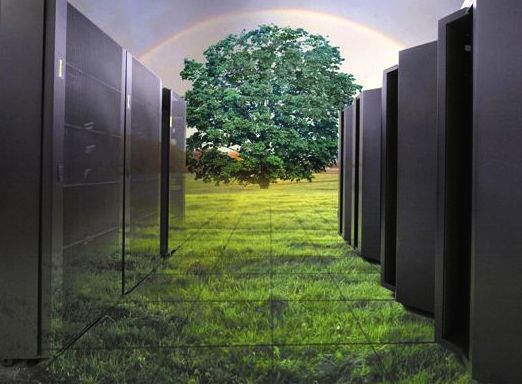Green500 Supercomputer List Reveals Intel, Nvidia Surprise

Intel CPUs and Nvidia GPUs are used in the world’s top 10 most energy-efficient supercomputers
The new ranking system for the world’s most energy-efficient supercomputers has revealed a few surprises.
According to the Green500 list released 20 November at the SC ’13 supercomputing show in Denver, the most energy-efficient supercomputer in the world is the Tsubame-KFC, a system housed in the Tokyo Institute of Technology in Japan that comes in with an efficiency of 4.5 gigaflops/watt. Each of the supercomputer’s nodes includes two Xeon E5-2620 v2 processors from Intel and four Kepler K20X GPUs from Nvidia.
Green 500
Coming in second was the Wilkes supercomputer at Cambridge University in England, a Dell system powered by Xeon E5-2630 v2 chips and Nvidia K20 GPUs. That system came in at 3.6 gigaflops/watt.
 Making its debut in fourth place was the Piz Daint supercomputer at the Swiss National Computing Centre, a system built on Cray XC30 servers using eight-core Xeon E5-2670 chips and Nvidia’s K20X GPUs. The Piz Daint also is the world’s sixth-fastest system, being the only new entrant in the top 10 of the Top500 list, which was released 18 November.
Making its debut in fourth place was the Piz Daint supercomputer at the Swiss National Computing Centre, a system built on Cray XC30 servers using eight-core Xeon E5-2670 chips and Nvidia’s K20X GPUs. The Piz Daint also is the world’s sixth-fastest system, being the only new entrant in the top 10 of the Top500 list, which was released 18 November.
Organisers of the list said it was the first time that all of the top 10 supercomputers were heterogeneous systems, using both CPUs and GPU accelerators. Such systems are becoming more common as organisations look for ways to increase the performance of their systems while keeping down the energy consumption.
Another indication of the industry’s drive for greater energy efficiency is that this also is the first time that the average of the measured power consumed by all systems on the Green500 declined when compared with the previous edition of the list.
“A decrease in the average measured power, coupled with an overall increase in performance is an encouraging step along the trail to exascale,” Wu Feng, one of the organisers of the Green500 list, said in a statement.
Exascale Push
Tech vendors, high-performance computing (HPC) and the government are pushing to reach exascale computing by the end of the decade. Exascale computers will be able to process computations significantly faster than the fastest systems now, and with minimal impact on power consumption.
Nvidia officials noted that only two of the top 10 systems in the Green500 list six months ago featured its GPUs, and said the key is that the Kepler architecture, launched in 2012, is three times more efficient than the previous Fermi architecture.
“Efficiency has, obviously, become an increasingly key consideration for supercomputing systems as they’ve gotten faster,” Sumit Gupta, general manager of Tesla Accelerated Computing products at Nvidia, said in a post on the company blog. “The largest supercomputers can consume megawatts of power, pushing their annual energy costs into the tens of millions of dollars. Improving energy efficiency is central to achieving exascale computing – that is, delivering supercomputers that run 50 times faster than today’s best, at a speed of 1 exaflops, or a million trillion flops.”
How well do you know the cloud? Take our quiz.
Originally published on eWeek.